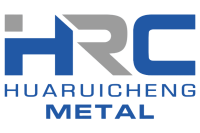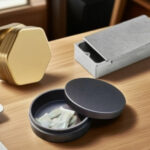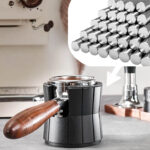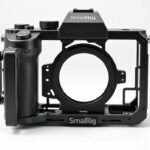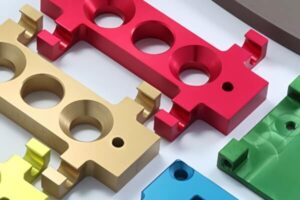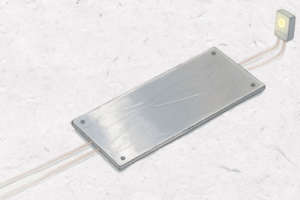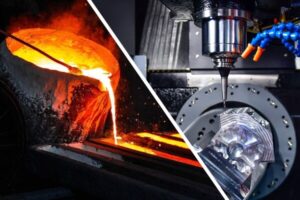Learn why sandblasting aluminum parts before anodizing is important and how it improves surface finish, color uniformity, and durability.
The Problem with CNC-Machined Aluminum Surfaces Before Anodizing
After CNC machining, aluminum parts often have visible tool marks from cutting tools. These CNC machining marks may be fine, but they reflect light unevenly and leave the surface feeling rough. If anodized directly, these marks become even more visible because anodizing aluminum enhances surface texture. For example, a CNC-milled aluminum plate with visible spiral patterns will show darker rings after anodizing, making the part look inconsistent. This is a common concern in CNC milling machining projects that require a clean, professional appearance.

CNC Machining Marks on Aluminum: A Common Surface Challenge
During CNC machining, especially high-speed CNC milling, tool paths create ridges and grooves. These may be acceptable for functional parts but not for visual components. Even small scratches can affect how anodized aluminum looks.
Why Anodizing Aluminum Directly Can Worsen Surface Imperfections
Anodizing doesn’t cover flaws—it highlights them. Any irregularity on the aluminum surface gets emphasized, especially under lighting. Unfinished CNC marks make the anodized layer appear streaky and inconsistent.
The Role of Surface Finish in the Appearance of Anodized Aluminum
Surface finish affects both feel and appearance. A smooth, uniform base leads to better-looking anodized aluminum. Without surface prep like sandblasting, CNC-machined parts may look patchy or unprofessional.

What Is Sandblasting and How Does It Work?
Sandblasting is a surface treatment that blasts fine abrasive material (like sand or glass beads) at high speed to smooth or texture the surface. In CNC machining, sandblasting is often used after milling but before anodizing. This step removes tool marks, provides a matte surface, and the color is more consistent after anodized. A sandblasting service ensures precision and consistency for each part.
The Sandblasting Process Explained: Equipment, Media, and Technique
Sandblasting uses compressed air to propel abrasive media onto aluminum surfaces. Different media types—like aluminum oxide or glass beads—create different textures. This allows manufacturers to fine-tune surface roughness.
Sandblasting vs Beadblasting: Which Is Better for CNC Machined Parts?
Beadblasting is a gentler form of sandblasting that uses spherical glass beads. It’s better for cosmetic surfaces needing a satin finish. Sandblasting is more aggressive and removes deeper tool marks from CNC milling machining.
How Sandblasting Prepares Aluminum Parts for Anodizing
Sandblasting roughens and evens out the surface, improving dye absorption during anodizing. This leads to more uniform color and better corrosion resistance. It also enhances adhesion in functional anodized layers.

Benefits of Sandblasting Before Anodizing Aluminum
Sandblasting offers several benefits for CNC machining projects. First, it creates a matte texture that improves the final appearance of anodized aluminum. Second, it reduces reflections and ensures color consistency across parts. In a case study, two CNC-milled parts—one sandblasted and one not—were anodized in black. The sandblasted part had even coloring, while the unsanded one showed dark rings from tool paths. A professional sandblasting service eliminates these issues before anodizing aluminum.
Achieving a Uniform Surface Finish for Better Anodizing Results
A smooth, matte surface makes color more consistent. This is especially important for bulk CNC machining runs, where all parts must match in appearance after anodizing.
Enhancing the Aesthetic Appeal of Anodized Aluminum Parts
Sandblasting adds a refined, satin look to aluminum, which is highly desirable in consumer electronics and automotive parts. The finish feels premium and hides minor scratches.
Improved Adhesion and Durability Through Sandblasting Service
Anodized layers form better on rougher surfaces. Sandblasting increases surface area, which improves bonding during anodizing and increases wear resistance.

How Sandblasting Integrates Into the CNC Milling Machining Workflow
In CNC machining, sandblasting is typically done after milling and before anodizing. This sequence ensures the part is dimensionally accurate, clean, and ready for finishing. For example, a CNC-milled camera body goes from machining → cleaning → sandblasting → anodizing. This process helps eliminate surface flaws and ensures the final anodized aluminum surface is both functional and appealing.
Choosing the Right Surface Treatment for Your CNC Machined Aluminum Parts
Not all projects require sandblasting, but for anodized finishes, it’s often essential. Sandblasting ensures uniform texture and consistent coloring. Compared to other pre-anodizing methods like chemical etching or polishing, sandblasting is more reliable and less costly. It also works better on complex CNC milling designs, including those with deep pockets and sharp edges.
When Is Sandblasting Essential Before Anodizing?
It’s essential when parts have visible CNC tool paths or when a consistent matte anodized finish is required. High-visibility parts benefit most.
Comparing Sandblasting with Other Pre-Anodizing Surface Treatments
Sandblasting is faster and more consistent than polishing. Chemical etching is good for small parts but may not remove deep machining marks.
Expert Tips for Getting the Best Finish on Anodized Aluminum
Always clean parts thoroughly before sandblasting. Use fine media for decorative parts. Match surface prep to anodizing goals: matte, glossy, or technical.
Conclusion
Sandblasting is an indispensable step for enhancing CNC-machined aluminum surfaces before anodizing. It effectively eliminates tool marks, creating a uniform matte finish that ensures consistent color and superior aesthetic appeal. This process significantly improves the quality and durability of anodized aluminum parts.
FAQs
Q: Why sandblast before anodizing aluminum?
A: It hides CNC marks and makes the anodized finish more even and smooth.
Q: Can sandblasting completely remove deep scratches from CNC machining?
A: Sandblasting can significantly reduce the visibility of shallow scratches and hide CNC tool marks, but very deep scratches might still be faintly visible.
Q: Is sandblasting always necessary before anodizing aluminum?
A: Not always. If a very bright, reflective finish is desired, or if tool marks are minimal, alternative treatments might be considered.
Q: What types of aluminum alloys can be sandblasted before anodizing?
A: Most common aluminum alloys suitable for CNC machining and anodizing, like 6061 and 7075, can be effectively sandblasted.
Q: Does sandblasting change the dimensions of the aluminum part?
A: Sandblasting removes a minimal amount of material. For critical tolerances, discuss with your sandblasting service, but it’s generally negligible.
